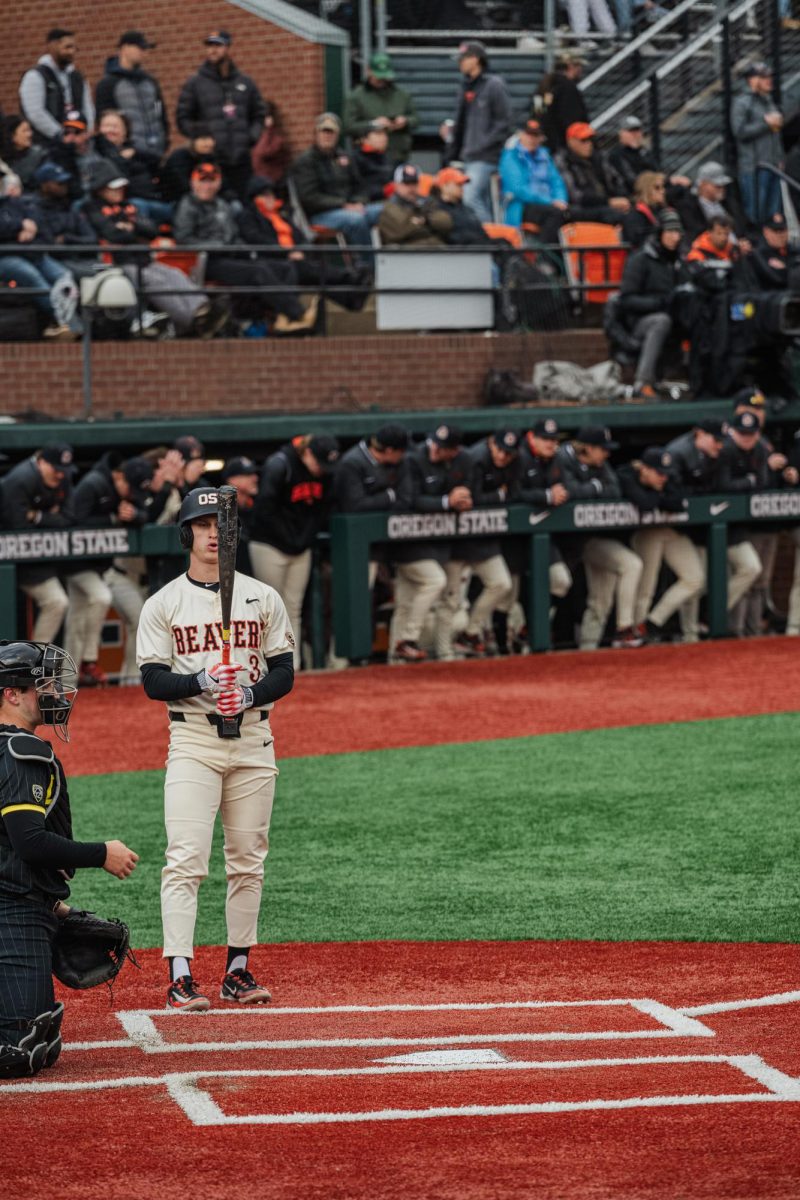Yourself, a blanket and the night sky.
That is all it takes to enjoy the Orionid meteor shower coming up in late October of this year, or the tail end of the Perseids happening throughout September.
Meteors, better known as “shooting stars” streaking across the night sky, happen all the time but occur much more frequently during annual meteor showers, like the Perseids and Orionids.
“Meteor showers are caused when the particles out in space basically interact with the Earth’s atmosphere and they fall towards Earth,” said Jeff Hazboun, a professor of physics at Oregon State University. “And they’re moving so fast, hundreds of thousands of miles an hour, that when they hit the air, they heat up… and they just get super hot and that’s where all the light comes from.”
Earth comes in contact with space particulate all the time, which is why meteors are visible year-round.
However, meteor showers are special annual phenomena when Earth’s orbit intersects a lot more particles, namely, comet trails.
“A meteor shower comes from when the Earth passes through the path of a comet. So as comets are moving around in our solar system they just leave stuff behind,” Hazboun said. “All that stuff that gets left behind by the comet, we run through that. It’s like when you’re driving a car and you hit a big cloud of bugs, effectively, except these bugs are moving 100,000 miles an hour and they give off really bright lights when you hit them.”
How can meteor showers be predicted? “The comet is usually out in the far edge of our solar system, it’s no longer even anywhere near us. But that debris just stays there for so long that we’re still encountering that same spot where it went through our solar system each year. That’s why they happen very regularly,” said OSU Astronomy Club President Phia Morton.
The Perseids are a result of the Swift-Tuttle comet, and the Orionids are the debris from Halley’s comet.
The meteor showers are so regular, astronomers can even predict where most of the meteors can be spotted in the night sky. The name of the meteor shower is a good indication of where to start looking.
“Each meteor shower has something called a radiant which is essentially, if you were to look at all the shooting stars, they all appear like they’re coming from the same point in the sky. And that’s just where the debris is entering the atmosphere,” Morton said. “For the Perseids, that radiant is the constellation Perseus, for the Orionids it’s Orion. That’s our very clever naming convention.”
Hazboun explains it as an animation of a shot from Star Wars, if one were going into hyperdrive, heading towards those stars in the constellation.
Looking for the constellations themselves is a way to pass the time while waiting to spot one of the falling meteors.
“These are a really good excuse to do all kinds of other stargazing while you’re out there. One thing that’s amazing today is that you can just get an app on your phone and use that app to figure out where everything is.” Hazboun said. “It’ll tell you where the Perseids are, it’ll tell you where the Orionids are. It’ll tell you what time is the best time at any given night to see them. It will even help you figure out where in the sky to look.”
OSU’s Astronomy Club has experienced astronomers to offer help.
“If there are meteor showers and it’s clear out we try to just go outside, usually we meet on the roof of Weniger, which is the physics building. But for events like that, sometimes we decide to meet at this covered bridge off campus that has some good skies, sometimes just a park,” Morton said.
On cloudy nights, the OSU Astronomy Club hosts guest speakers or has officers that will present. “Sometimes we’ll do a movie night or arts and crafts together towards the end of the term when everyone’s kind of dead. We do field trips too. Last year we went to Eastern Washington, and the year before we went to the planetarium in Eugene,” Morton said.
If you’re interested, Morton said the best way to get involved is to sign up on IdealLogic, which hosts all of OSU’s clubs or follow them on Instagram (@osu_astro).
“I would say the big tips are always you have to stay up and stay warm,” Hazboun said. “The bigger the view of the sky you have the better. It needs to be clear out, which depending on time of year is not great in Corvallis, but can be comfortable. So you can get a big blanket, even a sleeping bag– although if I’m getting a sleeping bag at night, I usually fall asleep.”
Ellie Counts, third-year graphic design major at OSU who spotted two meteors at the height of the Perseids in August, recommends that stargazers “lay down on the ground. I feel like you can see more of the sky and it doesn’t hurt your neck. Take a blanket, lay on the ground and make sure you’re in an area where you can see the most sky possible. Someplace away from light pollution and trees and stuff.”
Although the height of the Perseids has passed, The Orionids will be at their peak between Oct. 20 and 21.
“I think everyone needs a little more whimsy in their life. (Meteor showers) are a really easy way to pack some whimsy in before school starts. Get some wishes before the school year starts; for good grades or whatnot,” Counts said.
Morton recommends, if you do choose to go out on a clear night with a few friends and the conversation lulls, try out this joke: “what’s the difference between a hamburger and a shooting star? One’s a little meaty-or.”

















































































































Patsy Lusk • Sep 21, 2023 at 10:31 am
Very informative-I am now excited to try some of the suggestions! Thanks for the ending joke!